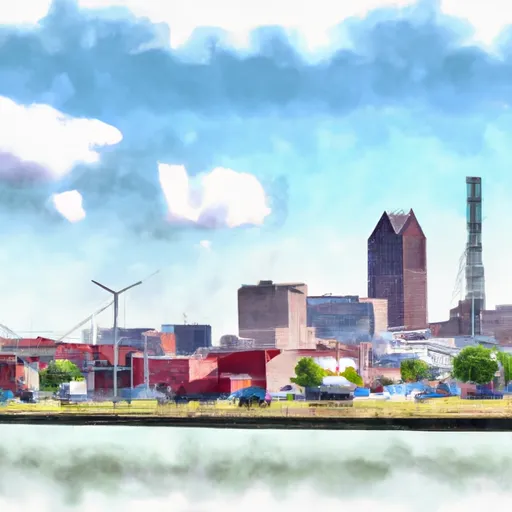°F
°F
mph
Windspeed
%
Humidity











Lorain, Ohio, situated on the southern shore of Lake Erie, experiences a humid continental climate with distinct four seasons. Summers are warm and moderately humid, with average temperatures ranging from the mid-70s to low-80s Fahrenheit. Winters can be cold and snowy, with temperatures averaging in the mid-20s to low-30s. Spring and fall showcase mild temperatures and colorful foliage.
Lorain's hydrology is significantly influenced by Lake Erie. The city has several rivers and creeks, including the Black River, which meanders through the heart of Lorain and eventually flows into Lake Erie. These water bodies offer opportunities for boating, fishing, and kayaking.
Outdoor recreation in Lorain is abundant. Lakeview Park, located on the shores of Lake Erie, provides beautiful sandy beaches, picnic areas, and a historic rose garden. The Black River Reservation, part of the Lorain County Metro Parks system, offers hiking and biking trails, birdwatching spots, and scenic overlooks along the river. Vermilion River Reservation, another nearby park, features trails, fishing spots, and a chance to explore the picturesque Vermilion River.
In summary, Lorain, Ohio, offers a diverse climate, hydrological features influenced by Lake Erie, and numerous outdoor recreation opportunities for residents and visitors.
Weather Forecast
Lorain receives approximately 914mm of rain per year, with humidity levels near 79% and air temperatures averaging around 11°C. Lorain has a plant hardyness factor of 6, meaning plants and agriculture in this region thrive during a short period during spring and early summer. Most plants will die off during the colder winter months.
Regional Streamflow Levels
52
Cubic Feet Per Second
281
Cubic Feet Per Second
136
Cubic Feet Per Second
100
Cubic Feet Per Second
Nearby Camping
| Camping Area | Reservations | Toilets | Showers |
|---|---|---|---|
| C. M. Wilson Conservation Area | |||
| Lorne C. Henderson Con. Area |



